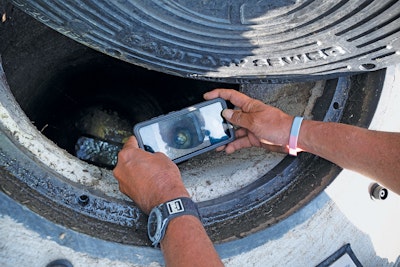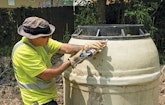
Heavy equipment operators Jonas Tobler (left) and Jerry Jones remove one of the new watertight manhole covers from Composite Access Products. Fulton county replaced 19 old manholes in Azalea Park to eliminate inflow and infiltration. (Photography by Kaylinn Gilstrap)
In early May, Fulton County (Georgia) Public Works had its first true test.
A storm hit the area, producing 6 inches of rain over the course of a couple days — the type of rain event that for years consistently caused sanitary sewer overflow problems for the utility. But this time...











